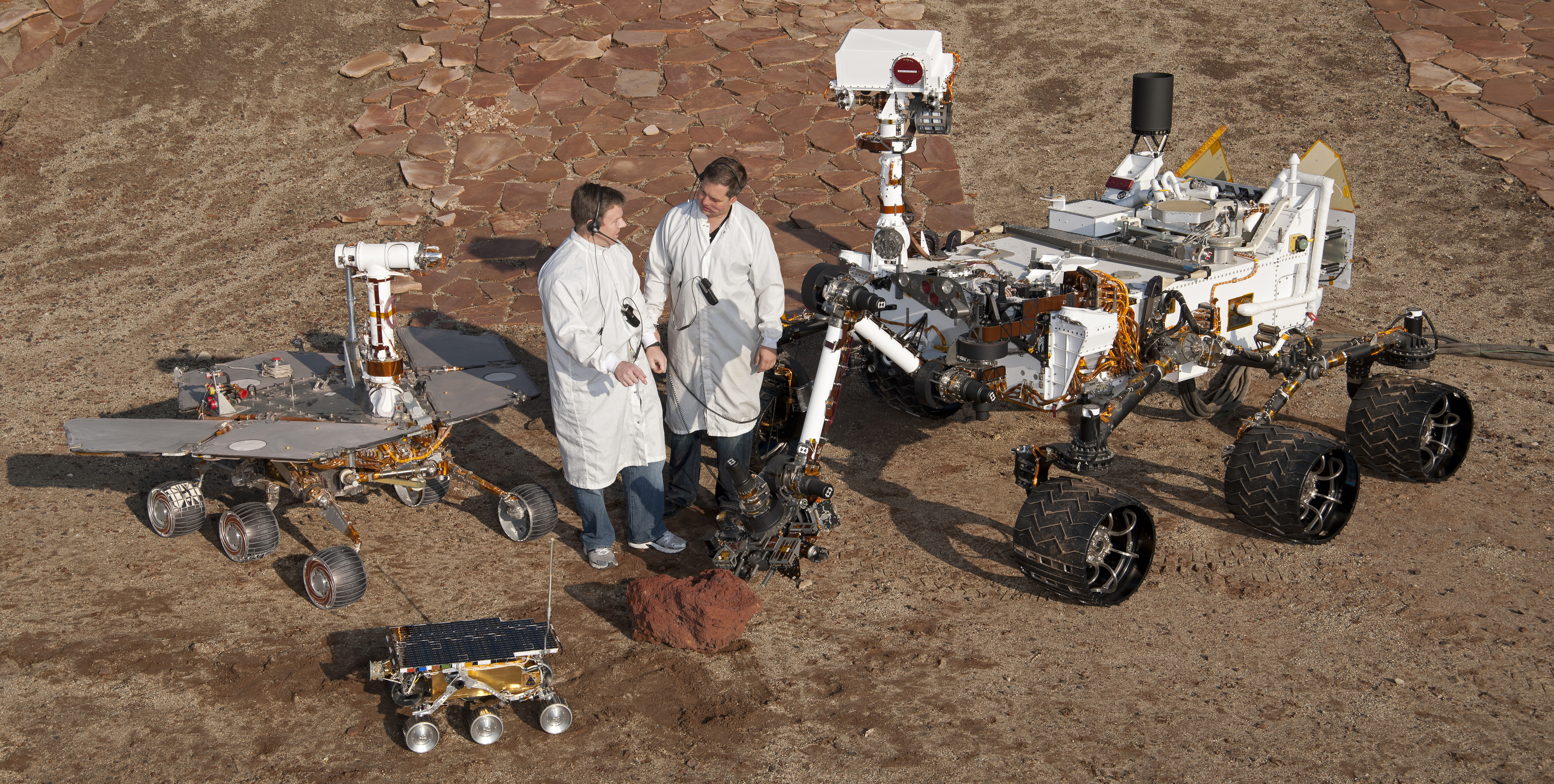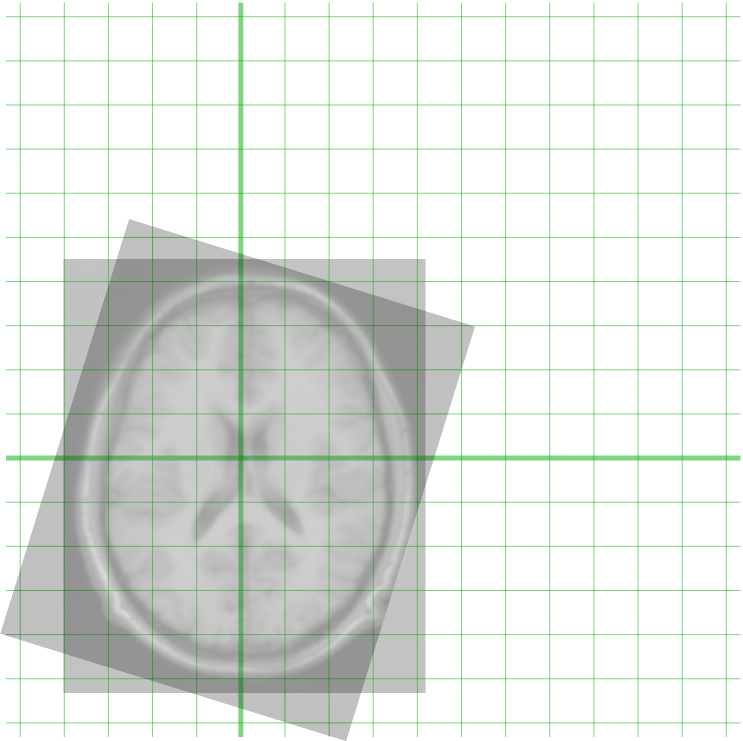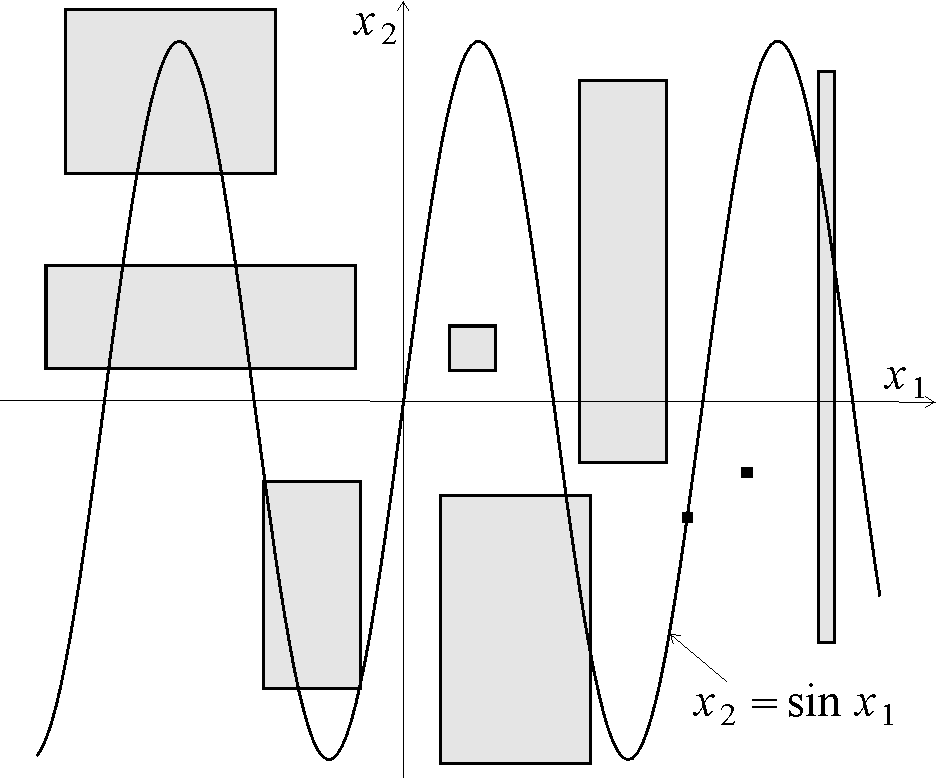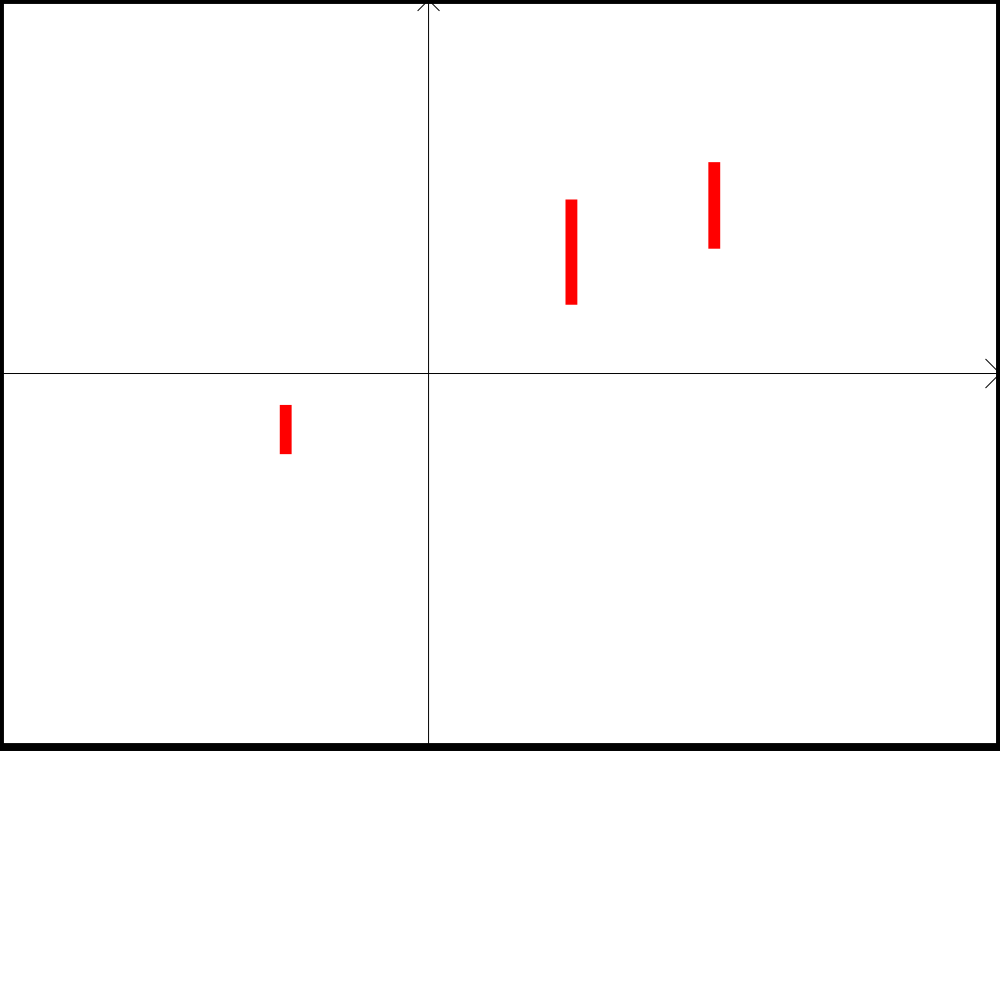|
VSLAM
Simultaneous localization and mapping (SLAM) is the computational problem of constructing or updating a map of an unknown environment while simultaneously keeping track of an agent's location within it. While this initially appears to be a chicken or the egg problem, there are several algorithms known to solve it in, at least approximately, tractable time for certain environments. Popular approximate solution methods include the particle filter, extended Kalman filter, covariance intersection, and GraphSLAM. SLAM algorithms are based on concepts in computational geometry and computer vision, and are used in robot navigation, robotic mapping and odometry for virtual reality or augmented reality. SLAM algorithms are tailored to the available resources and are not aimed at perfection but at operational compliance. Published approaches are employed in self-driving cars, unmanned aerial vehicles, autonomous underwater vehicles, planetary rovers, newer domestic robots and even inside ... [...More Info...] [...Related Items...] OR: [Wikipedia] [Google] [Baidu] |
Stanley2
Stanley may refer to: Arts and entertainment Film and television * Stanley (1972 film), ''Stanley'' (1972 film), an American horror film * Stanley (1984 film), ''Stanley'' (1984 film), an Australian comedy * Stanley (1999 film), ''Stanley'' (1999 film), an animated short * Stanley (1956 TV series), ''Stanley'' (1956 TV series), an American situation comedy * Stanley (2001 TV series), ''Stanley'' (2001 TV series), an American animated series Other uses in arts and entertainment * Stanley (play), ''Stanley'' (play), by Pam Gems, 1996 * Stanley Award, an Australian Cartoonists' Association award * ''Stanley: The Search for Dr. Livingston'', a video game Businesses * Stanley, Inc., an American information technology company * Stanley Aviation, an American aerospace company * Stanley Black & Decker, formerly The Stanley Works, an American hardware manufacturer ** Stanley Hand Tools, a division of Stanley Black & Decker * Stanley bottle, a brand of food and beverage containers * Sta ... [...More Info...] [...Related Items...] OR: [Wikipedia] [Google] [Baidu] |
Rover (space Exploration)
A rover (or sometimes planetary rover) is a planetary surface exploration device designed to move over the rough surface of a planet or other planetary mass celestial bodies. Some rovers have been designed as land vehicles to transport members of a human spaceflight crew; others have been partially or fully autonomous robots. Rovers are typically created to land on another planet (other than Earth) via a lander-style spacecraft,tasked to collect information about the terrain, and to take crust samples such as dust, soil, rocks, and even liquids. They are essential tools in space exploration. Features Rovers arrive on spacecraft and are used in conditions very distinct from those on the Earth, which makes some demands on their design. Reliability Rovers have to withstand high levels of acceleration, high and low temperatures, pressure, dust, corrosion, cosmic rays, remaining functional without repair for a needed period of time. Autonomy Rovers which land on celesti ... [...More Info...] [...Related Items...] OR: [Wikipedia] [Google] [Baidu] |
Wi-Fi
Wi-Fi () is a family of wireless network protocols based on the IEEE 802.11 family of standards, which are commonly used for Wireless LAN, local area networking of devices and Internet access, allowing nearby digital devices to exchange data by radio waves. These are the most widely used computer networks, used globally in small office/home office, home and small office networks to link devices and to provide Internet access with wireless routers and wireless access points in public places such as coffee shops, restaurants, hotels, libraries, and airports. ''Wi-Fi'' is a trademark of the Wi-Fi Alliance, which restricts the use of the term "''Wi-Fi Certified''" to products that successfully complete Interoperability Solutions for European Public Administrations, interoperability certification testing. Non-compliant hardware is simply referred to as WLAN, and it may or may not work with "''Wi-Fi Certified''" devices. the Wi-Fi Alliance consisted of more than 800 companies from ar ... [...More Info...] [...Related Items...] OR: [Wikipedia] [Google] [Baidu] |
Tactile Sensor
A tactile sensor is a device that measures information arising from physical interaction with its environment. Tactile sensors are generally modeled after the biological sense of cutaneous receptor, cutaneous touch which is capable of detecting stimuli resulting from mechanical stimulation, temperature, and pain (although pain sensing is not common in artificial tactile sensors). Tactile sensors are used in robotics, computer hardware and security systems. A common application of tactile sensors is in touchscreen devices on mobile phones and computing. Tactile sensors may be of different types including piezoresistive, piezoelectric, optical, capacitive and elastoresistive sensors.. Tactile sensors also come in the form of pressure indicating films that reveal pressure distribution and magnitude between contacting surfaces by virtue of an immediate and permanent color change. These pressure indicating films are one-time use sensor that capture the maximum pressure they were e ... [...More Info...] [...Related Items...] OR: [Wikipedia] [Google] [Baidu] |
Image Registration
Image registration is the process of transforming different sets of data into one coordinate system. Data may be multiple photographs, data from different sensors, times, depths, or viewpoints. It is used in computer vision, medical imaging, military automatic target recognition, and compiling and analyzing images and data from satellites. Registration is necessary in order to be able to compare or integrate the data obtained from these different measurements. Algorithm classification Intensity-based vs feature-based Image registration or image alignment algorithms can be classified into intensity-based and feature-based.A. Ardeshir Goshtasby2-D and 3-D Image Registration for Medical, Remote Sensing, and Industrial Applications Wiley Press, 2005. One of the images is referred to as the ''target'', ''fixed'' or ''sensed'' image and the others are referred to as the ''moving'' or ''source'' images. Image registration involves spatially transforming the source/moving image(s) ... [...More Info...] [...Related Items...] OR: [Wikipedia] [Google] [Baidu] |
Ouster OS1-64 Lidar Point Cloud Of Intersection Of Folsom And Dore St, San Francisco
{{disambig ...
Ouster may refer to: * Ouster (company), a US-based lidar technology company founded in 2015 * Ouster clause, a function removing judicial review of legislation * Ousters, characters in Dan Simmons' series of Hyperion novels * A cause of action available to one who is refused access to their concurrent estate In property law, a concurrent estate or co-tenancy is any of various ways in which property is owned by more than one person at a time. If more than one person owns the same property, they are commonly referred to as co-owners. Legal terminolo ... [...More Info...] [...Related Items...] OR: [Wikipedia] [Google] [Baidu] |
Maximum A Posteriori Estimation
An estimation procedure that is often claimed to be part of Bayesian statistics is the maximum a posteriori (MAP) estimate of an unknown quantity, that equals the mode of the posterior density with respect to some reference measure, typically the Lebesgue measure. The MAP can be used to obtain a point estimate of an unobserved quantity on the basis of empirical data. It is closely related to the method of maximum likelihood (ML) estimation, but employs an augmented optimization objective which incorporates a prior density over the quantity one wants to estimate. MAP estimation is therefore a regularization of maximum likelihood estimation, so is not a well-defined statistic of the Bayesian posterior distribution. Description Assume that we want to estimate an unobserved population parameter \theta on the basis of observations x. Let f be the sampling distribution of x, so that f(x\mid\theta) is the probability of x when the underlying population parameter is \theta. Then t ... [...More Info...] [...Related Items...] OR: [Wikipedia] [Google] [Baidu] |
Bundle Adjustment
In photogrammetry and computer stereo vision, bundle adjustment is simultaneous refining of the 3D coordinates describing the scene geometry, the parameters of the relative motion, and the optical characteristics of the camera(s) employed to acquire the images, given a set of images depicting a number of 3D points from different viewpoints. Its name refers to the '' geometrical bundles'' of light rays originating from each 3D feature and converging on each camera's optical center, which are adjusted optimally according to an optimality criterion involving the corresponding image projections of all points. Uses Bundle adjustment is almost always used as the last step of feature-based 3D reconstruction algorithms. It amounts to an optimization problem on the 3D structure and viewing parameters (i.e., camera pose and possibly intrinsic calibration and radial distortion), to obtain a reconstruction which is optimal under certain assumptions regarding the noise pertaining to the ... [...More Info...] [...Related Items...] OR: [Wikipedia] [Google] [Baidu] |
Interval Propagation
In numerical mathematics, interval propagation or interval constraint propagation is the problem of contracting interval domains associated to variables of R without removing any value that is consistent with a set of constraints (i.e., equations or inequalities). It can be used to Propagation of uncertainty, propagate uncertainties in the situation where set estimation, errors are represented by intervals. Interval propagation considers an estimation problem as a constraint satisfaction problem. Atomic contractors A contractor associated to an equation involving the variables ''x''1,...,''x''''n'' is an operator which contracts the intervals [''x''1],..., [''x''''n''] (that are supposed to enclose the ''x''''i'''s) without removing any value for the variables that is consistent with the equation. A contractor is said to be ''atomic'' if it is not built as a composition of other contractors. The main theory that is used to build atomic contractors are based on Interval arithmet ... [...More Info...] [...Related Items...] OR: [Wikipedia] [Google] [Baidu] |
Set Estimation
In statistics, a random vector is classically represented by a probability density function. In a set-membership approach or set estimation, is represented by a set to which is assumed to belong. This means that the Support (mathematics), support of the probability distribution function of is included inside . On the one hand, representing random vectors by sets makes it possible to provide fewer assumptions on the random variables (such as Independence (probability theory), independence) and dealing with nonlinearity, nonlinearities is easier. On the other hand, a probability distribution function provides a more accurate information than a set enclosing its support. Set-membership estimation Set membership estimation (or ''set estimation'' for short) is an Estimation theory, estimation approach which considers that measurements are represented by a set (most of the time a box of where is the number of measurements) of the measurement space. If is the parameter vector a ... [...More Info...] [...Related Items...] OR: [Wikipedia] [Google] [Baidu] |
Covariance Intersection
Covariance intersection (CI) is an algorithm for combining two or more estimates of state variables in a Kalman filter when the correlation between them is unknown. Formulation Items of information a and b are known and are to be fused into information item c. We know a and b have mean/covariance \hat a, A and \hat b, B, but the cross correlation is not known. The covariance intersection update gives mean and covariance for c as : C^ = \omega A^ + (1-\omega) B^ \, , : \hat c = C(\omega A^ \hat a + (1-\omega)B^ \hat b) \, . where ''ω'' is computed to minimize a selected norm, e.g., the trace, or the logarithm of the determinant. While it is necessary to solve an optimization problem for higher dimensions, closed-form solutions exist for lower dimensions. Application CI can be used in place of the conventional Kalman update equations to ensure that the resulting estimate is conservative, regardless of the correlation between the two estimates, with covariance strictly non- ... [...More Info...] [...Related Items...] OR: [Wikipedia] [Google] [Baidu] |
Posterior Probability Distribution
The posterior probability is a type of conditional probability that results from updating the prior probability with information summarized by the likelihood via an application of Bayes' rule. From an epistemological perspective, the posterior probability contains everything there is to know about an uncertain proposition (such as a scientific hypothesis, or parameter values), given prior knowledge and a mathematical model describing the observations available at a particular time. After the arrival of new information, the current posterior probability may serve as the prior in another round of Bayesian updating. In the context of Bayesian statistics, the posterior probability distribution usually describes the epistemic uncertainty about statistical parameters conditional on a collection of observed data. From a given posterior distribution, various point and interval estimates can be derived, such as the maximum a posteriori (MAP) or the highest posterior density interval ... [...More Info...] [...Related Items...] OR: [Wikipedia] [Google] [Baidu] |






